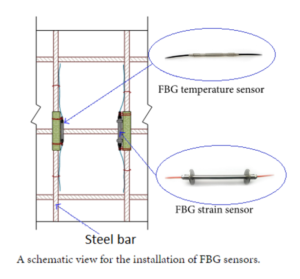 Nowadays, numerous civil infrastructures have been built in metropolitan areas all over the world. The performance of these infrastructures during construction, operation, maintenance, and upgrading is a major concern for society. The use of smart sensing technologies for structural health monitoring has attracted much attention due to their exceptional benefits. These technologies have developed rapidly and some have found widespread applications in civil and geotechnical engineering practices, such as fiber optic sensing (FOS), time-domain reflectometry (TDR) and etc.
Nowadays, numerous civil infrastructures have been built in metropolitan areas all over the world. The performance of these infrastructures during construction, operation, maintenance, and upgrading is a major concern for society. The use of smart sensing technologies for structural health monitoring has attracted much attention due to their exceptional benefits. These technologies have developed rapidly and some have found widespread applications in civil and geotechnical engineering practices, such as fiber optic sensing (FOS), time-domain reflectometry (TDR) and etc.
Based on fiber optic sensor technology, a quasi-distributed fiber optic sensing array can be established to perform accurate strain and temperature measurements. Besides FBG, another popular FOS technology is the fully distributed Brillouin optical time-domain reflectometry (BOTDR), which enables the measurement of strain and temperature profiles along with single-mode optical fiber.
Compared with electrical strain gauges, fiber Bragg grating (FBG) sensing technology is a relatively novel method for tunnel structural health monitoring, which has a number of advantages including high accuracy, multiplexing, electromagnetic interference resistance, and good repeatability. In order to study the internal force of the tunnel liner and detect the potential safety hazards, series of strain monitoring tests of a tunnel, taking into account the complex stress and strain variation during tunneling, were performed by employing the tandem linear FBG sensor arrays controlled by the wavelength division multiplexing (WDM) technology.
The length of the fiber, as well as the installation position of FBG sensors, depends on the size of the tunnel cross-section. For each test section, two layout methods could be employed: only using an independent fiber for the connection and signal transmission, or using two independent fibers according to the left and right sides of the tunnel cross-section.
BG sensors-based in situ monitoring on the internal force of the tunnel structure is of great environmental adaptability and performance stability. However, considering the cross effects of uncertain factors, such as special engineering properties, hydration heat of cement, and shrinkage and creep of concrete, the strain, and temperature collected through FBG sensors is influenced by composite factors. The stress and strain of liner concrete under the independent action of various factors cannot be analyzed accurately by using current ways. Therefore, it is necessary to conduct relevant studies to solve cross effect problems.
Optromix provides industry sensing solutions for Structural Health Monitoring (SHM) for different types of facilities. Optromix Company also offers a wide range of fiber optic temperature sensors for monitoring tunnel structures. To learn more about SHM please contact us: info@optromix.com or +1 617 558 98 58

